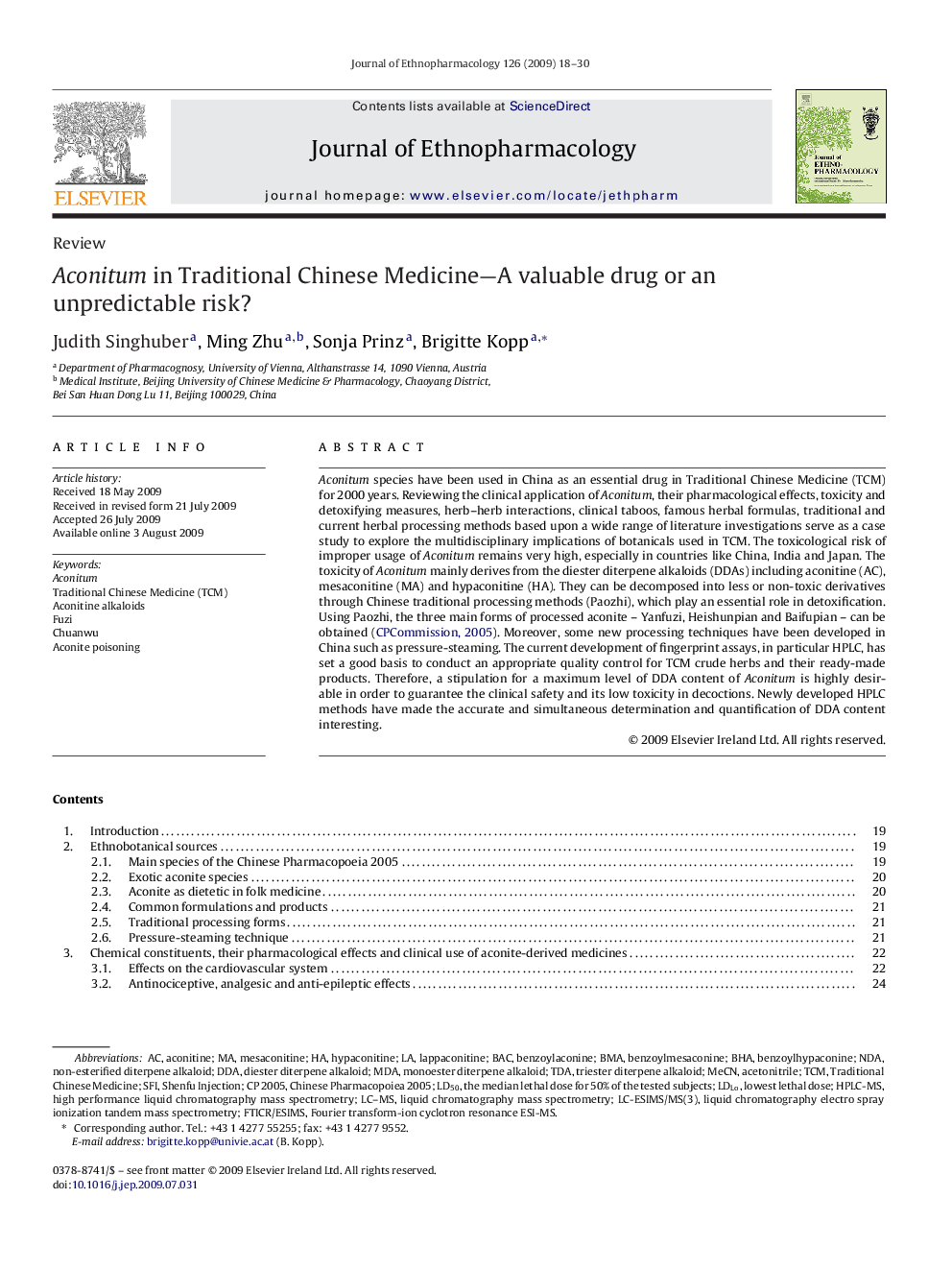| کد مقاله | کد نشریه | سال انتشار | مقاله انگلیسی | نسخه تمام متن |
|---|---|---|---|---|
| 2546672 | 1124033 | 2009 | 13 صفحه PDF | دانلود رایگان |

Aconitum species have been used in China as an essential drug in Traditional Chinese Medicine (TCM) for 2000 years. Reviewing the clinical application of Aconitum, their pharmacological effects, toxicity and detoxifying measures, herb–herb interactions, clinical taboos, famous herbal formulas, traditional and current herbal processing methods based upon a wide range of literature investigations serve as a case study to explore the multidisciplinary implications of botanicals used in TCM. The toxicological risk of improper usage of Aconitum remains very high, especially in countries like China, India and Japan. The toxicity of Aconitum mainly derives from the diester diterpene alkaloids (DDAs) including aconitine (AC), mesaconitine (MA) and hypaconitine (HA). They can be decomposed into less or non-toxic derivatives through Chinese traditional processing methods (Paozhi), which play an essential role in detoxification. Using Paozhi, the three main forms of processed aconite – Yanfuzi, Heishunpian and Baifupian – can be obtained ( CPCommission, 2005). Moreover, some new processing techniques have been developed in China such as pressure-steaming. The current development of fingerprint assays, in particular HPLC, has set a good basis to conduct an appropriate quality control for TCM crude herbs and their ready-made products. Therefore, a stipulation for a maximum level of DDA content of Aconitum is highly desirable in order to guarantee the clinical safety and its low toxicity in decoctions. Newly developed HPLC methods have made the accurate and simultaneous determination and quantification of DDA content interesting.
In the present work essential aspects of the use of aconite root as an herbal medicinal drug are reviewed, since it is one of the most commonly used drugs in traditional Chinese medicine. Important facts of its clinical use, toxicity, pharmacology as well as herb–herb combinations and interactions were summarized. Furthermore the different aconite preparations and some processing techniques are discussed and data of various HPLC analysis methods are compared. This also includes information on the low stability of the diester diterpene alkaloids aconitine, mesaconitine and hypaconitine. It stands to reason that – with the use of appropriate processing methods, good quality control of the preparations and prescription by experienced practitioners – intoxications with aconite could be avoided.Figure optionsDownload as PowerPoint slide
Journal: Journal of Ethnopharmacology - Volume 126, Issue 1, 29 October 2009, Pages 18–30